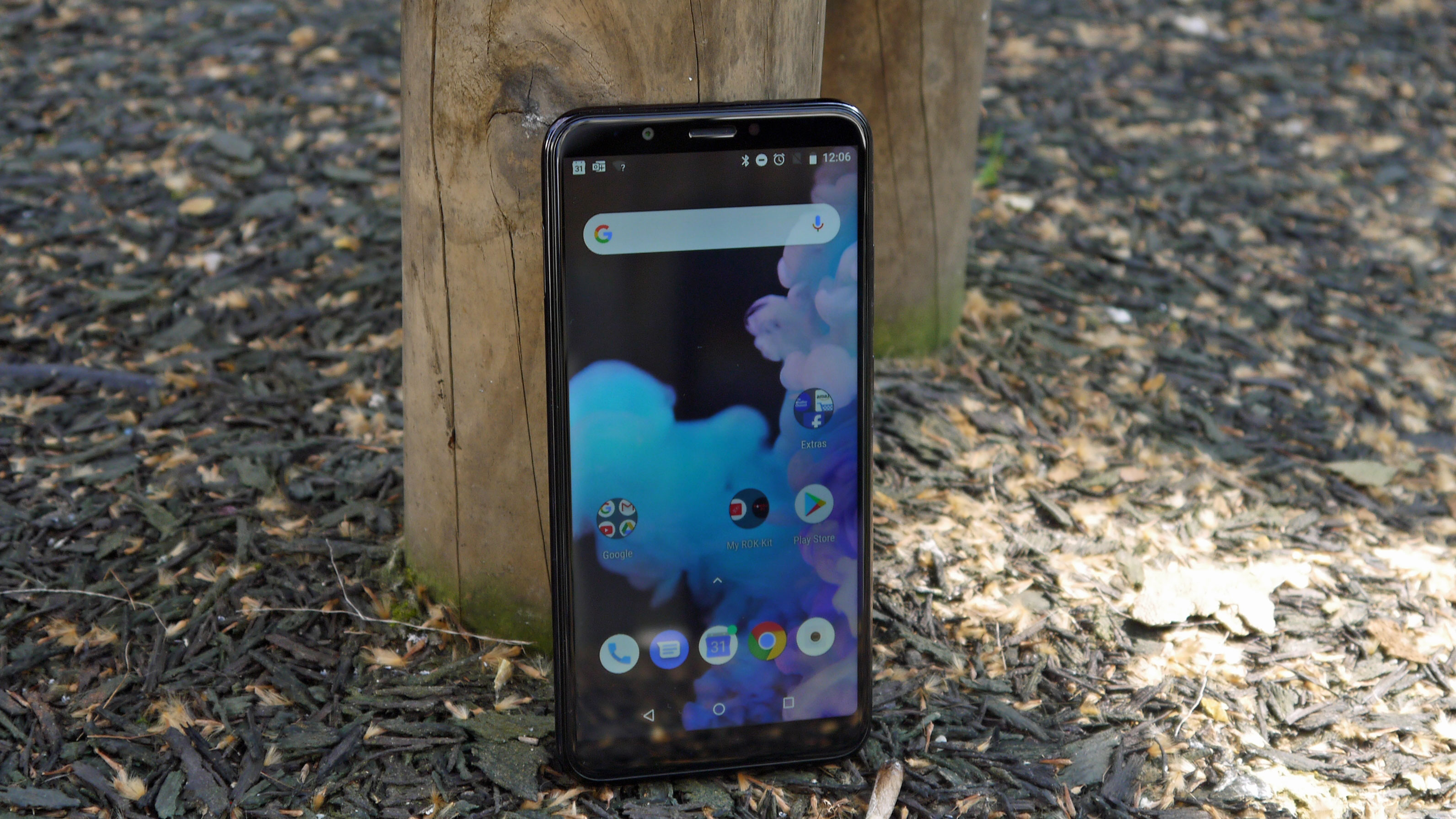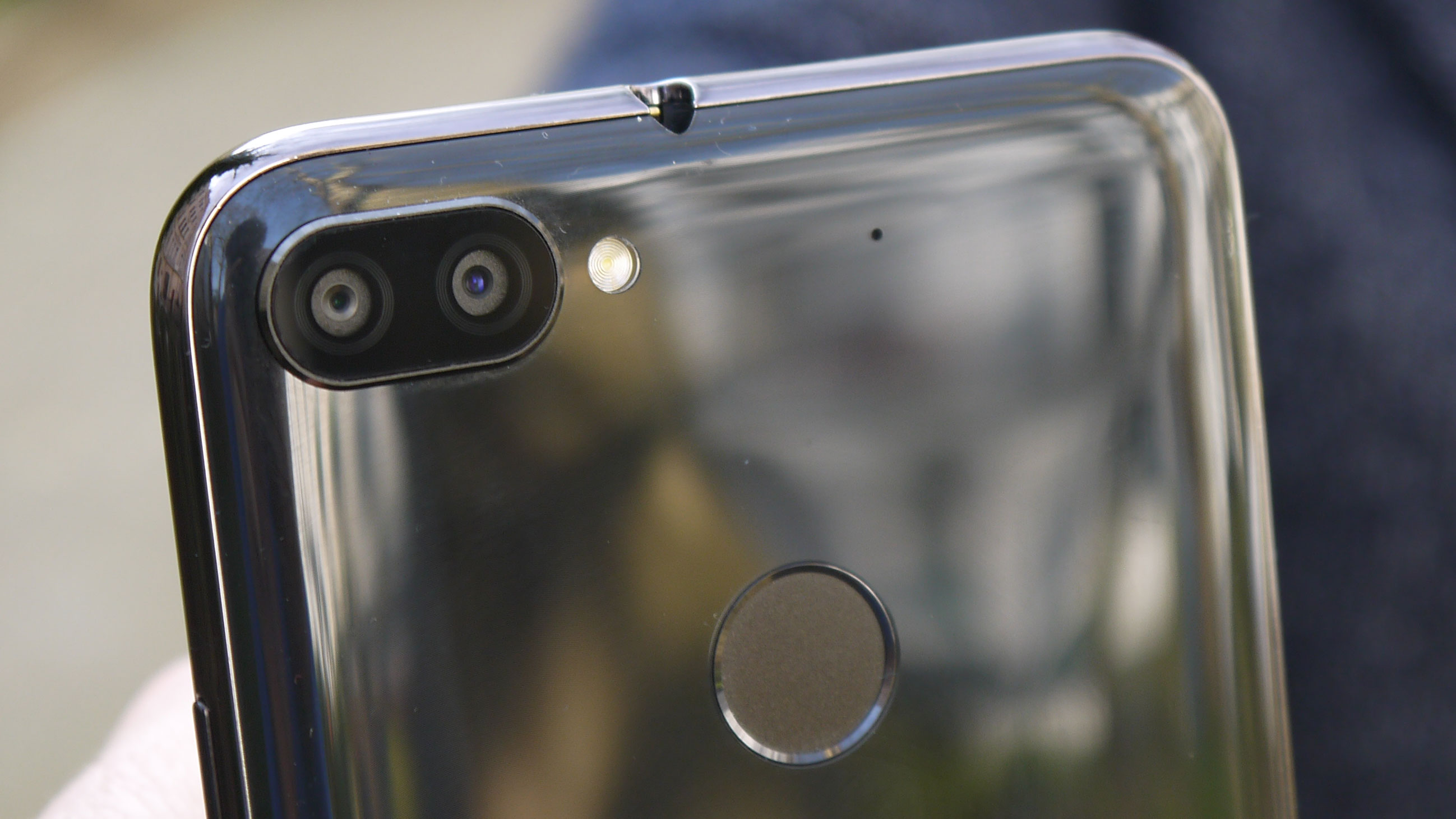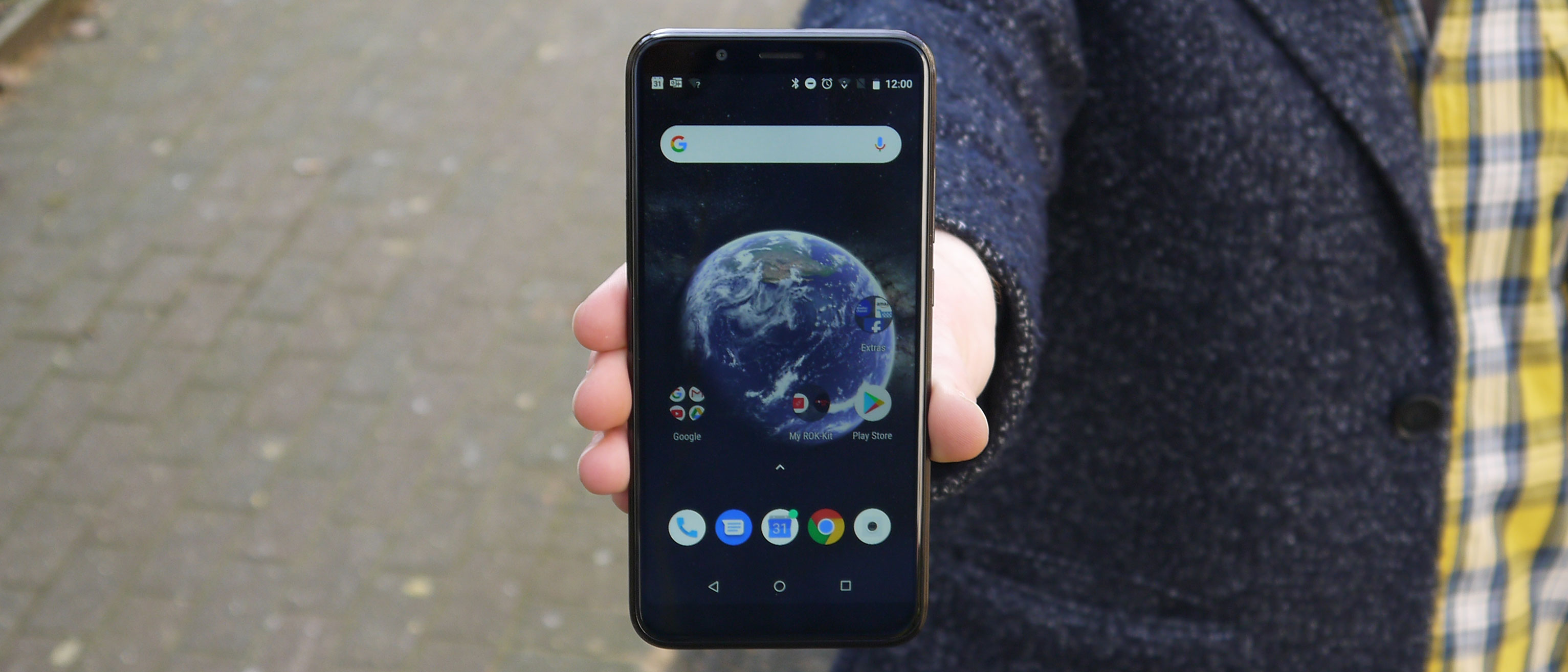TechRadar Verdict
The ROKiT IO Pro 3D's poor 3D tech is the least of its problems, with an outdated OS and slow processing power making it a hard phone to like.
Pros
- +
Durable battery life
- +
Comes with a hardy case
- +
Life services may be useful
Cons
- -
The 3D is painful to look at
- -
Outdated OS and ports
- -
3D display makes normal use hard
Why you can trust TechRadar
If you haven’t heard of ROKiT's phones, that’s because the company has never made one before – it’s blasting into the smartphone market with a wide range of devices, including a feature phone and a flip phone, and its highest-end handset is the ROKiT IO Pro 3D.
'High-end' is a relative term in this case, as the IO Pro 3D sits at an affordable price tag – and on top of that it comes with two unique selling points that ROKiT hopes will distinguish it from the competition: its 3D screen and the ROKiT Life Services bundle, which provides accident cover as well as Wi-Fi calling.
- The Samsung Galaxy Note 9 also ran Android 8, how does it compare?
- What can we expect from the iPhone 11?
- These are the best camera smartphones available
However ROKiT is an untested phone company with no brand name appeal, and as with all novel features, the 3D screen and Life Services could make the device a revolutionary piece of tech – or a total waste of time. So which way does the ROKiT IO Pro 3D fall?
Price and availability

If you’re interested in the ROKiT IO Pro 3D, or its smaller sibling the ROKiT IO 3D, you’re only going to be able to get your hands on it if you live in the US or UK, as it’s only on sale in those countries upon launch. ROKiT told us it’s planning to expand, starting with other European countries, but for now the ROKiT IO Pro 3D has a limited availability.
The ROKiT IO Pro 3D will set you back $300 / £250 – that’s $100 / £110 more than the standard ROKiT IO 3D, which costs $200 / £140. There’s only one model available, with 4GB RAM and 64GB internal memory, and you can find it on Amazon.
That’s a low price for a phone, but the cost will slowly increase as you use the phone, as some of its main features are subscription-based.
A subscription to ROKFLiX 3D, the 3D entertainment app, costs $7.99 / £3.50 per month, and for the Rok Life Services package, after a free three-month trial you’ll be shelling out $14.99 / £11.99 per month.
Sign up for breaking news, reviews, opinion, top tech deals, and more.
That means the phone and two years of the services, not including your contract, will set you back $580 / £478 – and while that’s less than a flagship phone, you can get a lot of very good mid-range handsets for that sort of money.
ROKiT suggests the price for Rok Life Services represents roughly 50% savings on a comparable insurance package, so if you're accident prone it may be a worthwhile addition.
Design and display
At first glance, the ROKiT IO Pro 3D looks like your fairly typical mid-range Android handset, albeit with the company’s logo on the back.
Above and below the display are a medium-sized bezel and chin. The front-facing camera and speaker are nestled in the top bezel, and on the rear is a dual-lens camera and fingerprint sensor. To the right the handset has a volume rocker and power button.
We found the fingerprint sensor a little too high to be convenient to use – we had to stretch to reach it, or hold our phone in an unnatural way. We also noticed that when we pressed down on the rear of the phone, the shell dipped – we didn’t feel like we were doing damage to the phone by doing this, but it did cause us to doubt the structural integrity.

Also in the top bezel is a notification light that turns green to show a notification, and red when the battery is low or charging – it’s fairly rudimentary, but we’ve seen some pretty confusing notification lights on other phones, and the ROKiT IO Pro 3D’s is simple but reliable.
The device has a 3.5mm headphone port, but it’s off-center at the top of the handset, which is an unusual location, although it makes no functional difference. On the base of the phone is a micro USB port, which feels antiquated at a time when most new Android phones have USB-C.

The IO Pro 3D measures 160.2 x 77.3 x 8.4mm, which is actually a little thinner than the ROKiT IO 3D, which is 9.5mm thick, and it’s also lighter than the IO 3D’s 180g at 172g.
The device’s display is 5.99 inches, with a 2160 x 1080 resolution and 18:9 aspect ratio. Because of the 3D screen technology, non-3D phone use caused a constant shimmering effect across the screen if you moved it in your hand, which was annoying and put us off using the phone for everyday functions.

Tom Bedford joined TechRadar in early 2019 as a staff writer, and left the team as deputy phones editor in late 2022 to work for entertainment site (and TR sister-site) What To Watch. He continues to contribute on a freelance basis for several sections including phones, audio and fitness.
